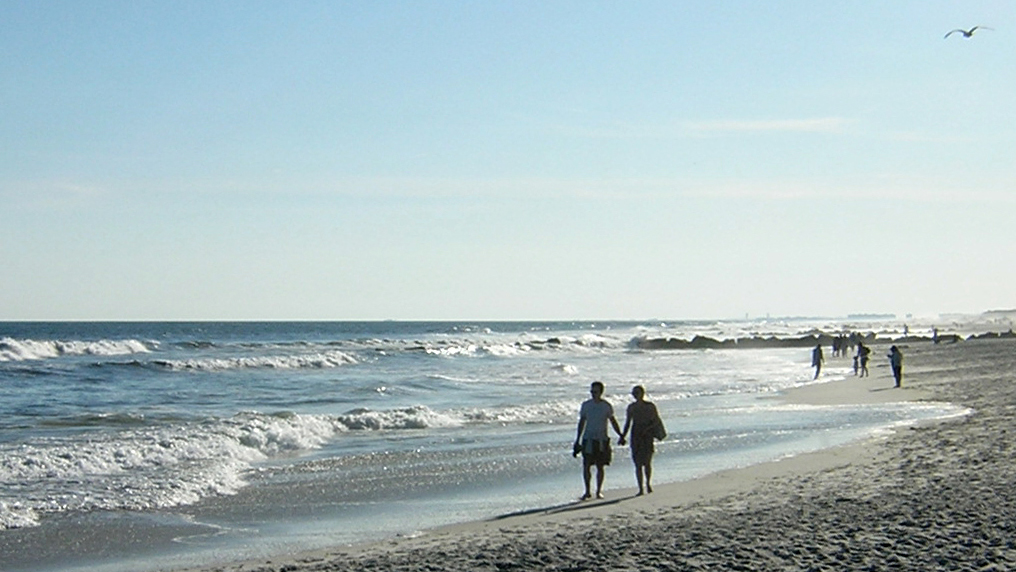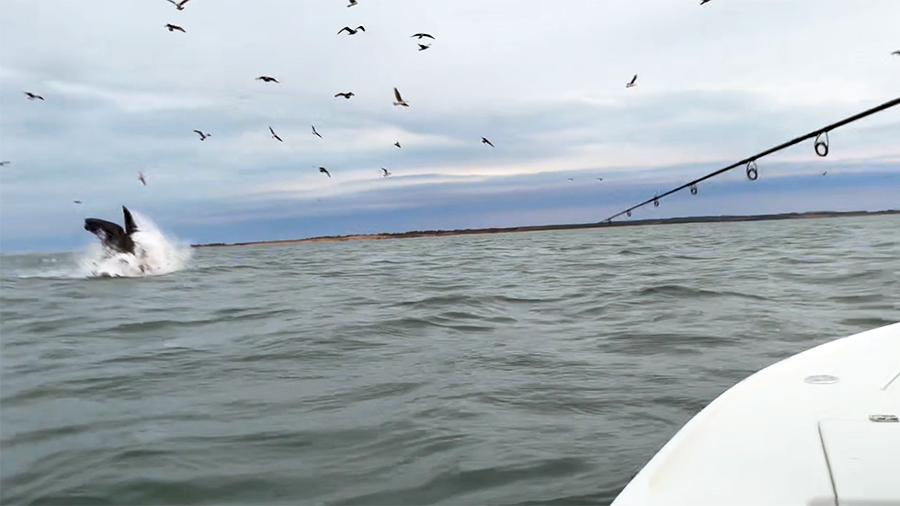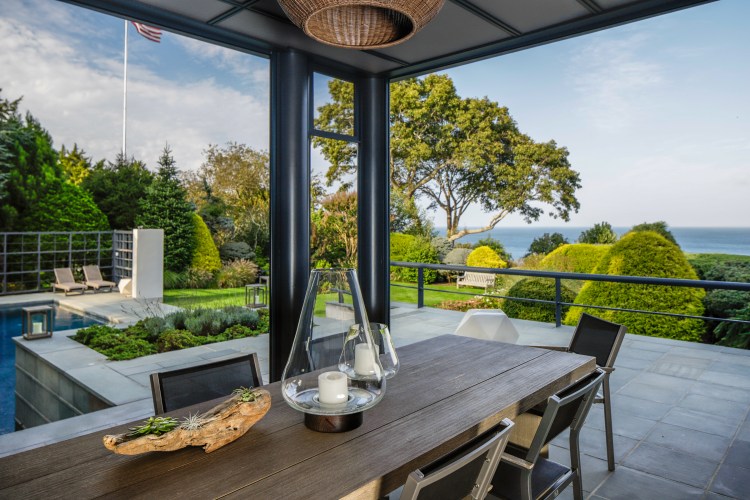Editor’s note: this story has been updated.
Seasoned Long Island beach bums know better than anyone that natural highlights, sun-kissed complexions and carefree attitudes worn proudly by frequent beachgoers do not manifest overnight.
But, oceanfront homeowners aside, all of those trips to the shore aren’t free. It can take years to decode labyrinth park rules while trying not to break the bank 100 times over on parking fees alone. All while praying for the weather to cooperate.
For those who have never dared to venture beyond Jones Beach State Park, the Press has compiled this Insider’s Guide to Long Island Beaches, highlighting hidden gems, loopholes and savings.
And yes, this guide is specifically for south shore ocean beaches because, well, sand. Kick rocks, Long Island Sound.
1. BUY IN BULK
Ask any Costco shopper or sports fan season ticket holder: volume discounts are worth their weight in gold.
An Empire Passport may cost a cool $80, but it spares drivers $8-$10 per vehicle at six LI ocean beaches run by the New York State parks department. They include Jones, Robert Moses, Hither Hills, Shadmoor, Camp Hero and Montauk Point. Go to these beaches any more than twice a month from May to September and it pays off—plus the pass is good for free entry to most state parks until Dec. 31.
The Suffolk County Green Key—$30 for residents, $200 for non-residents—offers reduced admission to county-run beaches, such as Smith Point on the eastern tip of Fire Island, Cupsogue in Westhampton, Shinnecock East in Southampton, Meschutt in Hampton Bays and Montauk County Park. Reduced rates are also offered for seniors and veterans. Entrance is free for disabled veterans.
The Nassau County Leisure Pass, available to Nassau residents only, costs $32. With it, access to Nickerson Beach in Lido is discounted from $35 to $13, meaning the pass starts saving money after just two visits. Discounts available for vets, elders, civic duty volunteers, and active military.
2. THE GOLDEN HOUR
Rather pay nothing to go to the beach? Just wait until dusk. While the state-run beaches stop charging for entry at 4 p.m. on weekdays and 6 p.m. on weekends, waiting until late afternoon when the town-run beaches stop collecting saves the most money.
That’s because many town beaches charge exponentially higher fees for non-town residents. The best example is the Town of Oyster Bay’s oceanfront park, Tobay Beach, which offers $60 season passes for town residents and charges non-residents a whopping $50 per visit on weekdays (non-residents not allowed during weekends collection times).
But, ticket agents stop collecting there at 6 p.m. and Tobay has three restaurants open til 11 p.m. The Crazy Oyster and the Mango Bay Latin Kitchen and Cantina, both on the bay, are open daily and oceanfront The Ocean Club is open 6-11 p.m. Saturdays.
Rivaling those rates is the Town of Babylon, where residents can buy a season pass for $45 and non-residents are charged up to $30 per visit on weekends and $20 weekdays to super-popular Gilgo and Cedar beaches (non-Babylonians are shunned altogether from Overlook)—until 5 p.m., that is. Dedicated after-hours Cedar Beach visitors who find the lot full can walk from nearby Overlook Beach immediately to the east.
Ticket collectors also go home at 5 p.m. at Town of Hempstead beaches, including Point Lookout, Lido, Lido West and Sands on the east end of Long Beach Island, where rates are $10 for residents and $25 for non-residents. Hempstead doesn’t have a town-wide park pass, but season passes are offered at individual beaches with deals such as 15 trips for $100.
3. ONLY TOURISTS PAY FOR PARKING
East of those beaches is Fire Island, where—aside from Robert Moses and Smith Point—a $19 round-trip ferry trip is generally required to mid-island hot spots that don’t allow vehicles. That means struggling to find parking at the ferry terminals, where lots quickly fill up on summer weekends.
FI beachgoers who drive to the Bay Shore port can spare themselves ferry company parking lot fees if they find a free spot on a side street north of Montauk Highway and walk the half hour to the boats or hop a $5 cab, which is still cheaper than pay lots or fines. But, make sure it’s a 12-hour spot and don’t park there overnight or the summons will negate the savings.
While that helps for those destined for communities between Kismet and Ocean Bay Park, parking at the Sayville train station also saves fees at that town’s FI ferry terminal to eastern FI destinations such as Fire Island Pines, Cherry Grove, Sailor’s Haven and Water Island.
Those heading for Davis Park, where beachgoers leave from the Patchogue terminal, find that being a Brookhaven resident with a $15 park pass ($5 for vets, handicapped, and elders) good for two years beats paying much more for parking without. Everyone else can park free at the Watch Hill ferry terminal—or the train station a block away if that lot is full—then take the Watch Hill boat to get across the bay and walk 15 minutes west to Davis Park. But watch out, there’s a 20-minute walk back to the car from the Davis Park ferry terminal if not returning via the Watch Hill boat, which stops running earlier.
4. HOOF IT
There are a few bucks to be saved for those that don’t mind putting some work into it with these two tricks.
Save on ferry fare by parking at Robert Moses State Park’s field 5 and taking the scenic 1.7-mile stroll east to Kismet, the westernmost residential community of FI, home to two spunky bars/restaurants. Those game for adding another mile on that hike—or bring an off-road bicycle to ride down unpaved Burma Road—are rewarded with Fair Harbor, the only other western FI community with a restaurant before unpaved roads farther east make it impossible to ride without a fat-tired beach bike. Beachfront walkers beware: naturalists have been rebelling against a post-Sandy nude beach ban at Lighthouse Beach.
While that trick has been around, this one is new. The new pedestrian path connecting Jones and ToBay beaches is another way non-Oyster Bay town residents can avoid paying parking fees. The path starts at Cedar Creek County Park in Seaford, which makes it a good way to catch some sun without burning a hole in the wallet.
5. SAIL AND SAVE
Most marina docking fees are around the same or steeper than parking lots, but Gilgo Beach and ToBay Beach offer boaters bargain pricing. At Gilgo, after purchasing a $50 boat-docking pass for the season, the daily fee is $5 for small boats. At ToBay, residents for can purchase full-season boating passes as low as $65-$90. Both vary with the size of the boat.
Breaking down docking fees in even greater detail are the experts over at Boating Times Long Island, who regularly update their handy Marina 411 feature. The editor also notes that boaters can also simply anchor their vessels for free in areas such as Hemlock Cove near Cedar Beach, wade to shore and then walk to the beach.
For those without a boat to call their own, Long Island Rail Road offers combined ferry fare and cab packages. For under $50, it includes ferry fare and three-course meal at one of three Ocean Beach restaurants: McGuire’s, The Island Mermaid or Bocce Beach. The catch is the deal is only offered Monday through Thursday, but that’s a steal for the notoriously expensive barrier island.
6. SHACKING UP WITH THE KARDASHIANS
Rivaling the celebrity of its residents are some of the Hamptons famed beaches, which have ranked in recent years on Dr. Beach’s prestigious nation-wide Top 10 list, including Main Beach in East Hampton and Coopers Beach in Southampton.
The rate at Coopers Beach is $50 per day, but drivers can park on Halsey Neck and walk across to skip the parking fee, notes Nicole B. Brewer, executive editor and publisher of Hamptons.com. Otherwise, drivers should check the signs to ensure parking is allowed on side streets, as it usually isn’t. Every other beach requires a permit, including Main Beach, which charges $30 for residents and non-residents alike.
Park at the Montauk Lighthouse to save on parking fees at Ditch Plains Beach, the Montauk home of the famous surf spot and infamous Ditch Witch truck, or take advantage of the Hamptons Free Ride from Southampton to Montauk and beaches along the way for free from 9 a.m. to 6 p.m. daily, added Brewer.
Of course, an even better idea is finding a friend or relative who rents or lives on the South Fork to save on the parking tickets that wind up on vehicles driven by tourists that inevitably confuse the rules. That doesn’t mean be like the stalkers who were arrested after making themselves at home in mansions owned by Sean Combs and Jennifer Lopez.
7: OT BY THE SEA
This one is for those looking for more nighttime fun at the beach can stay at the shore beyond the park-closes-at-dusk rules.
There are three oceanfront Tiki Joe’s (formerly Beach Huts) on the barrier islands, including ones in Smith Point, Meschutt Beach and Cupsogue Beach. All are open until 9:30 p.m.—plenty of time to chill out after the 5 p.m. free entry starts. Most locations offer live music nightly, same as the above-mentioned restaurants in Tobay open til 11 p.m.
The eponymous Gilgo Beach Inn that also sits bayside hosts the occasional live band and stays open until sundown, too.




























